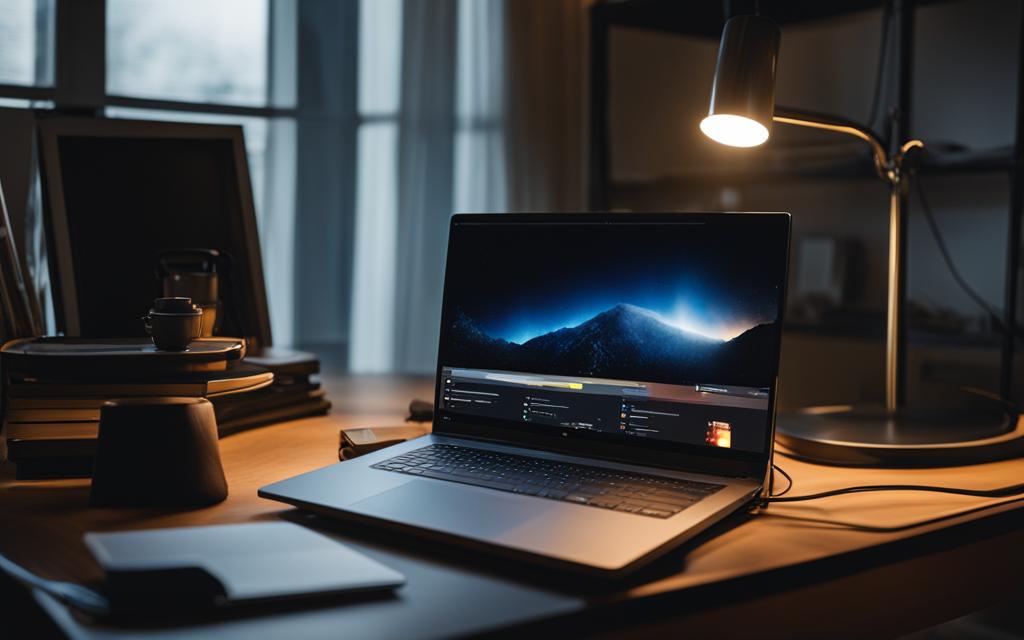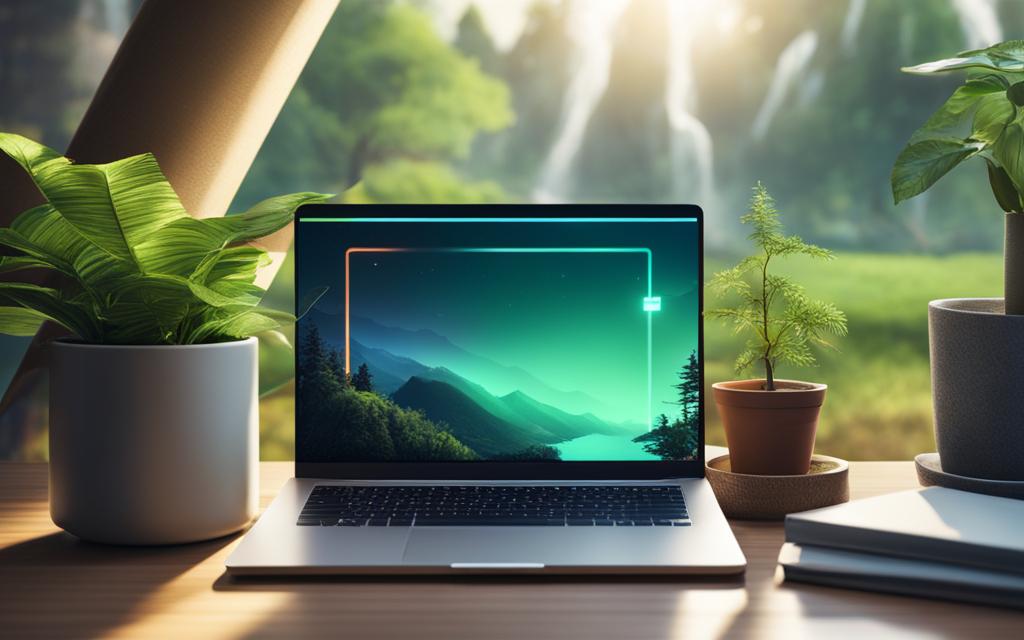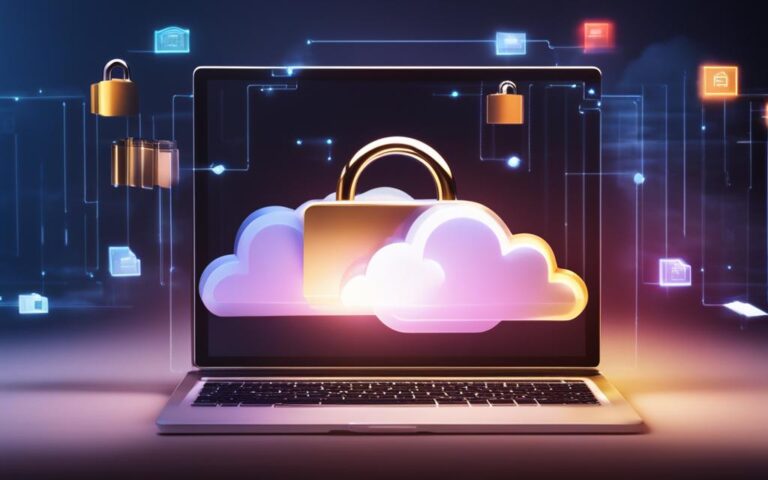If you’re a laptop owner, you know that one of the most significant challenges is ensuring that your device’s battery life lasts as long as possible. Nothing is worse than realizing that you’re out of juice when you’re in the middle of an important project or an exciting movie. But don’t worry – you can avoid this frustration and extend your laptop’s battery life with simple adjustments to your usage habits and settings.
By taking advantage of the tips provided in this section, you can maximize battery life on your laptop and have more time to work, play, and stream on-the-go. We’ll provide you with practical advice on how to adjust power settings, manage background processes and apps, optimize display and screen brightness, utilize battery-saving software and tools, and take care of your laptop battery – all contributing to longer usage time on a single charge.
In summary, this section will offer helpful laptop battery life tips aimed at extending your laptop’s battery life. From adjusting power settings to utilizing battery-saving software and tools, you’ll find a range of strategies to choose from that will help you get the most out of your laptop’s battery.
So, let’s dive into the details and discover how you can extend laptop battery life and enjoy longer usage time on your laptop without worrying about running out of power.
Understanding Laptop Battery Basics
Before diving into the tips to improve laptop battery performance, it’s important to understand how laptop batteries work. Laptop batteries are made up of cells that store chemical energy and convert it into electrical energy. As the battery discharges, the chemicals inside the cells change, and the battery loses capacity.
To optimize laptop battery life, it’s essential to manage the discharge and recharge cycles effectively. Overcharging or undercharging the battery can damage its cells and reduce battery life. Therefore, it’s crucial to keep an eye on the battery level and charge it appropriately.
Another factor that affects laptop battery optimization is temperature. A laptop battery works best at room temperature, and extreme temperatures can reduce battery performance and lifespan. It’s advisable to keep your laptop in a cool, dry place and avoid exposing it to direct sunlight or heat sources.
Now that you understand the basics of a laptop battery let’s move on to the tips and strategies to optimize its performance and improve battery life.
Optimizing laptop battery performance
To improve laptop battery performance, you need to implement strategies that optimize battery usage and prolong battery life. These strategies include:
- Adjusting power settings: Adjusting power settings can significantly impact battery life. The laptop’s power settings determine how quickly the battery drains. If you’re not actively using your laptop, consider using the “Power saver” mode to conserve battery life.
- Managing background processes and apps: Background processes and apps can consume a significant amount of battery power. To improve laptop battery performance, consider closing or managing running apps that you’re not using actively.
- Optimizing display and screen brightness: Reducing screen brightness and optimizing display settings can conserve battery power and improve battery performance. It’s advisable to turn off auto-brightness and adjust the brightness manually to an optimal level.
- Utilizing battery-saving software: Battery-saving software can optimize and enhance laptop battery performance by implementing power-saving strategies. These software tools monitor battery usage and manage background processes and apps automatically.
- Managing external devices and connectivity: External devices and connectivity options like Wi-Fi and Bluetooth can drain laptop battery. Turning off external devices and disabling unnecessary connectivity options can conserve battery power.
- Taking care of your laptop battery: Proper care and maintenance of your laptop battery can contribute to its overall lifespan and improve its performance. Regularly cleaning your laptop, keeping it cool and dry, and avoiding extreme temperatures can help extend battery life.
- Battery calibration and conditioning: Calibrating and conditioning your laptop battery periodically can optimize its performance and improve battery life. These processes involve fully charging and discharging the battery to recalibrate and balance its cells.
By implementing these strategies, you can significantly improve laptop battery performance and extend its lifespan. In the next section, we’ll explore how adjusting power settings can conserve laptop battery life.
Adjusting Power Settings
Adjusting power settings is a crucial step in maximizing the battery life of your laptop. By customizing the power settings based on your usage, you can extend the battery life and enjoy uninterrupted usage. Here are some laptop power-saving techniques that you can implement to extend your laptop battery life:
- Reduce screen brightness: One of the simplest ways to conserve battery power is to reduce screen brightness. Adjust the brightness to the lowest comfortable level, which can significantly decrease power consumption.
- Turn off keyboard backlight: If your laptop has a backlit keyboard, turning it off can conserve battery power. The backlight consumes a significant amount of power, and disabling it can help elongate the battery life.
- Disable Bluetooth: If you’re not using Bluetooth accessories, it’s advisable to turn off Bluetooth to save battery power. Bluetooth consumes battery power even when it’s not in use.
- Use the power saver mode: Most laptops have a power saver mode that you can activate to optimize battery life. This mode automatically adjusts the settings to consume less power, such as reducing screen brightness and slowing down the processor speed.
- Change sleep and hibernate settings: Adjusting the sleep and hibernate settings can also help conserve battery power. Consider setting your laptop to hibernate when the battery is low instead of sleep mode, which uses power to maintain the device’s state.
“Reducing screen brightness to the lowest comfortable level can significantly decrease power consumption.”
By implementing these power-saving techniques, you can extend the battery life of your laptop and enjoy increased usage time. Adjusting power settings is just one of the many ways to conserve battery power. Continue reading to learn about other laptop battery saving strategies.
Managing Background Processes and Apps
Managing background processes and apps is a crucial aspect of extending your laptop’s battery life. By limiting or closing processes and apps that are not in use, you can significantly reduce power consumption, providing you with more extended usage time.
One effective laptop battery saving strategy is to close any unused apps and processes running in the background when you’re not using them. For instance, if you’re not using a particular app, such as a music player or video editing software, you can close it to save power.
Another useful strategy is to prioritize apps and processes based on their power consumption levels. On Windows laptops, you can use the Task Manager to view the list of running apps and processes, along with their energy use. By identifying the most power-hungry apps and processes, you can choose to either close them or limit their usage time.
| App/Process | Energy Use |
|---|---|
| Google Chrome | High |
| Zoom | High |
| Microsoft Word | Medium |
| Spotify | Medium |
| Adobe Photoshop | High |
In addition, some apps offer built-in power-saving modes, allowing you to optimize their power usage for extended battery life. For instance, web browsers like Google Chrome and Firefox come with battery-saver functionality that reduces CPU and GPU usage, helping to conserve battery power.
Finally, you can also use third-party software to manage and limit background processes and apps. Applications like Process Lasso and WinOptimizer provide granular control over your laptop’s power usage, enabling you to prioritize and optimize processes to extend battery life.
Optimizing Display and Screen Brightness
Your laptop’s display and screen brightness settings play a significant role in its battery life. By optimizing these settings, you can extend the usage time of your device without having to worry about running out of power.
The first step in optimizing your display and brightness settings is to adjust them according to your environment. For instance, if you’re working in a dimly lit room, you don’t need the display to be as bright as it would be in a well-lit environment.
You can adjust the display and brightness settings by going to the display settings in your laptop’s control panel. There, you can adjust the brightness levels and choose a power plan that conserves battery power.

Another effective way to optimize the display settings is by using the built-in adaptive brightness feature. This feature adjusts the display brightness according to the lighting conditions of your environment, conserving battery power in the process.
If you’re working with graphics or visuals that require high brightness settings, consider plugging in your laptop or using an external power source. This will ensure that your laptop’s battery doesn’t drain too quickly.
Pro Tip: Lowering your display and brightness settings can significantly extend your laptop’s battery life, so it’s worth taking the time to optimize these settings according to your needs.
Utilizing Battery-Saving Software and Tools
In addition to adjusting power settings and managing background processes, utilizing battery-saving software and tools can significantly optimize your laptop’s battery performance. These applications are specifically designed to help extend the battery life of your device and improve its overall efficiency.
One popular battery-saving software is Battery Optimizer, which provides real-time information on your laptop’s battery status and usage. It also offers power-saving features, such as a battery usage profile manager and an automatic power-saving mode.
Another useful tool is TLP (TLP is an advanced power management tool for optimizing battery life on Linux), a free open-source utility for Linux users that optimizes power consumption and extends battery life. TLP comes with customizable settings for various hardware components and can be used on both laptops and desktops.
Additionally, many laptop manufacturers provide their own battery-saving tools and utilities. For instance, Lenovo’s Power Manager enables users to customize their laptop’s power settings and battery usage according to their preferences. HP’s Battery Health Manager monitors the laptop’s battery performance and offers optimization recommendations based on usage patterns.
Key Takeaways:
- Battery-saving software and tools can significantly optimize your laptop’s battery performance and extend its usage time.
- Battery Optimizer and TLP are popular applications that offer power-saving features and customizable settings to improve battery lifespan.
- Laptop manufacturers also provide their own battery-saving utilities, such as Lenovo’s Power Manager and HP’s Battery Health Manager.
By utilizing battery-saving software and tools, you can prolong your laptop’s battery life and enhance its overall performance. Make sure to explore the options available to you and choose the ones that are most suitable for your specific device and usage needs.
Managing External Devices and Connectivity
If you’re looking to extend laptop battery life and improve laptop battery performance, managing external devices and connectivity is essential. These components can consume a significant amount of battery power, leading to reduced battery life and performance. Here are some strategies you can use to manage external devices and connectivity and preserve battery life:
1. Unplug External Devices
External devices such as USB devices, printers, and external hard drives can drain your laptop’s battery. When not in use, it’s best to unplug these devices to conserve battery power.
2. Disable Unused Connectivity Options
Wi-Fi and Bluetooth connectivity options can also contribute to reduced battery life. When not in use, disable these options to save battery power. You can turn on these options when you need them.
3. Adjust Screen Brightness
Screen brightness plays a significant role in battery consumption. Lowering the screen brightness can extend battery life and improve overall performance.
4. Use Built-in Power Management Tools
Most laptops come with built-in power management tools that allow you to optimize battery usage. These tools can help you manage external devices and connectivity, adjust power settings, and more. Consult your laptop manual to learn about these tools and how to use them.
By implementing these strategies, you can effectively manage external devices and connectivity to extend laptop battery life and improve laptop battery performance. Unplugging external devices, disabling unused connectivity options, adjusting screen brightness, and using built-in power management tools can go a long way in preserving battery life and optimizing performance.
Taking Care of Your Laptop Battery
Taking care of your laptop battery is crucial in increasing its lifespan and extending its usage time. Here are some essential tips you can follow to ensure your laptop battery stays in top condition:
| Tip | Description |
|---|---|
| Keep your laptop cool | Excess heat can damage your battery and reduce its lifespan. Make sure your laptop is well-ventilated and avoid using it on soft surfaces like couches or beds that can block the vents. |
| Keep your battery charged | Avoid letting your battery drain completely before charging it. Instead, aim to keep your battery charged between 40% to 80% to maximize its longevity. |
| Store your laptop and battery properly | If you’re not using your laptop for an extended period, store it in a cool, dry place with the battery removed. |
| Clean your laptop and battery | Regularly clean your laptop and battery to prevent dust and debris buildup, which can damage the battery and reduce its performance. Use a soft, dry cloth to wipe down your laptop and battery. |
| Replace your battery when necessary | Over time, all laptop batteries will eventually need to be replaced. If you notice a significant decrease in battery life, consider replacing your battery to maintain optimal performance. |
Following these tips can help increase your laptop battery’s lifespan and extend its usage time, saving you money and frustration in the long run.
Battery Calibration and Conditioning
Proper calibration and conditioning of your laptop battery can significantly improve its performance and extend its lifespan. Here are some tips to help you optimize your battery’s performance:
- Charge your battery fully before first use: For optimal performance, it’s important to fully charge your laptop battery before using it for the first time.
- Calibrate your battery regularly: Battery calibration involves fully charging your battery, then discharging it until it reaches a low level before charging it again. This process helps your laptop accurately estimate the amount of battery life remaining. It is recommended to calibrate your battery every few months.
- Avoid deep discharges: Letting your laptop battery discharge completely can harm its lifespan. It’s better to charge it before it reaches a low level to avoid deep discharges.
- Avoid extreme temperatures: Exposing your laptop battery to high temperatures can damage its cells and affect its overall performance. Avoid leaving your laptop in direct sunlight or in a hot car.
- Remove your battery when not in use: If you don’t plan to use your laptop for an extended period, it’s best to remove the battery to prevent over-discharging and potential damage.
Additionally, conditioning your battery involves regularly discharging and recharging it to help maintain its performance. Here’s how to condition your laptop battery:
- Charge your battery fully and then use your laptop until it automatically shuts down due to low battery.
- Keep your laptop turned off and charge the battery fully – do not turn it on while charging.
- Repeat this process two to three times to condition your battery.
By calibrating and conditioning your laptop battery, you can optimize its performance and extend its lifespan, thus improving your laptop’s battery optimization and performance.
Advanced Battery-Saving Techniques
By implementing basic battery-saving strategies, you can significantly extend the battery life on your laptop. However, if you want to further enhance your device’s performance and longevity, consider utilizing the advanced techniques discussed below.
1. Use Battery-Saving Mode
Most laptops come with a built-in “Battery Saving” mode. This setting automatically adjusts your system’s performance settings, reducing the amount of power consumed by your device in order to extend battery life. Be sure to enable this mode whenever possible to maximize your battery life.
2. Reduce Screen Resolution
The higher the screen resolution, the more power your laptop consumes. Consider reducing your screen resolution to conserve battery life, especially if you’re not performing graphic-intensive tasks. This technique can help you save power without sacrificing visual quality.
3. Disable Startup Programs
When you start up your laptop, numerous programs may automatically start running in the background, consuming system resources and battery power. To optimize battery life, disable any unnecessary startup programs. This technique can reduce your system’s power consumption and enhance its overall performance.
4. Check for Power-Hungry Applications
Some applications are more power-hungry than others. Check your laptop’s task manager to identify any power-hungry applications that are currently running. Consider closing these applications or finding alternative programs with lower power consumption to conserve battery life.
5. Keep Your Laptop Cool
Heat can reduce your laptop battery’s overall lifespan. To extend your battery’s longevity, make sure your laptop stays cool. Keep it on a flat surface and ensure that air can circulate around the device. Consider investing in a laptop cooling pad to further improve airflow and prevent overheating.
6. Invest in a High-Capacity Battery
If you frequently use your laptop on-the-go, consider investing in a high-capacity battery. These batteries are designed to last longer and provide greater power capacity than standard batteries, helping you maximize your laptop’s overall battery life.
Conclusion
By following the tips and strategies outlined in this guide, you can effectively maximize the battery life on your laptop. Remember to adjust power settings to conserve energy, manage background processes and running apps, and optimize display settings. Utilize battery-saving software and tools to enhance performance and extend usage time, and take care of your laptop battery to ensure its longevity. Additionally, consider advanced techniques such as battery calibration and conditioning for optimal performance.
Keep in mind that every laptop battery is unique, so it may require some trial-and-error to find the best combination of settings and strategies that work for you. However, by taking the time to implement these tips, you can significantly extend the battery life of your laptop and enjoy longer usage time without worrying about running out of power.







